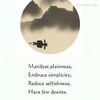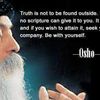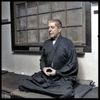19.5.2008 | 22:24
...og áfram með Uchiyama
An attitude of feeling safe and at peace as long as one is sitting is no good at all. All sentient beings are crying out in one form or another, they're suffering and in distress. We have to foster the vow deep in our hearts that we will work to settle all sentient beings. Vow is fundamental to our practice.
Uchiyama roshi
Bloggar | Slóð | Facebook | Athugasemdir (0)
18.5.2008 | 21:43
... we need to find the real meaning of our life
As a natural expression, we need to find the real meaning of our life in taking care of others and in putting our life-spirit into that attitude and effort. To find our life worth living isn't the same thing as just feeling a constant emotional happiness. The life-spirit that meets everything with parental mind: That is joyful mind.
Uchiyama roshi - Opening the Hand of Thought
Bloggar | Slóð | Facebook | Athugasemdir (1)
17.5.2008 | 21:50
KERTAHUGLEIÐSLA Í HALLARGARÐINUM
Vala and Halldor
Bloggar | Slóð | Facebook | Athugasemdir (0)
17.5.2008 | 09:29
Beginner's Mind - The earliest known version of the lecture
The earliest known version of the lecture that Shunryu Suzuki gave in Los Altos on Beginner's Mind which was used in the book Zen Mind, Beginner's Mind. This is from a manuscripts typed by Marian Derby, known to many as Marian Mountain. Marian edited her transcripts quite minimally, so the Suzuki quote you can see above and below might have even been further from what it came to be. This is something he wanted. He didn't want his lectures to be printed or published without editing by his students. In the case of the Zen Mind, Beginner's Mind lectures as well as others edited in his lifetime, the editors (Trudy Dixon or Richard Baker) would go over the editing with Suzuki - though I seem to remember that he didn't seem to care much and just trusted what they were doing. The spirit is not lost in editing - at least in my opinion by the editing that has been done so far.
Beginner's Mind
In beginner's mind we have many possibilities, but in expert mind there is not much possibility.
People say, "To study Zen is difficult," but there is some misunderstanding why it is difficult. It is not difficult because to sit in cross-legged position is hard, or to attain enlightenment is hard, but it is hard to keep our mind pure, and to keep our practice pure in original way. Zen become more and more impure, and after Zen school established in China it is development of Zen, but at the same time it become impure. But I don't want to talk about Chinese Zen or history of Zen this morning, but why I say I want to talk about why it is difficult is because just you came here this morning, getting up early is very valuable experience for you. Just you want to come is very valuable. We say, "Sho shin." "Sho shin" means "Beginner's mind." If we can keep beginner's mind always, that is the goal of our practice. We recited Prajna Paramita Sutra this morning only once. I think we recited very well, but what will happen to us if we recite twice, three times, four time, and more? Then we will easily lose our attitude in reciting -- original attitude in reciting -- the sutra. Same thing will happen to us. For awhile we will keep our beginner's mind in your Zen practice but if we continue to practice one year, two years, three years, or more, we will have some improvement, and we will lose the limitless meaning of the original mind. In beginner's mind we have many possibilities, but in expert mind there is not much possibility. So in our practice it is important to resume to our original mind, or inmost mind, which we, ourselves -- even we, ourselves do not know what it is. This is the most important thing for us. The founder of our school emphasized this point. We have to remain always beginner's mind. This is the secret of Zen, and secret of various practices -- practice of flower arrangement, practice of Japanese singing, and various art. If we keep our beginner's mind we keep our precepts. When we lose our beginner's mind we will lose all the precepts.
And for Zen students the most important thing is not to be dualistic. We should not lose our self-satisfied state of mind. We should not be too demanding, or we should not be too greedy. Our mind should be always rich, and self-satisfied. When our mind become demanding -- when we become longing for something, we will violate our precepts, not to kill, not to be immoral, not to steal, or not to tell lie, and so on. Those are based on our greedy mind. When our mind is self-satisfied we will keep our precepts. When we ourselves is always self-satisfied, we have our original mind, and we can practice good, and we are always true to ourselves. So, the most difficult thing is to keep our beginner's mind in our practice. So, if you can keep your beginner's mind forever, you are Buddha. In this point, our practice should be constant. We should practice our way with beginner's mind always. There is no need to have deep understanding about Zen. Even though you read Zen literature you have to keep this beginner's mind. You have to read it with fresh mind. We shouldn't say, "I know what is Zen," or "I have attained enlightenment." We should be always big enough. This is very important. And we should be very, very careful about this point.
I was very much impressed by your practice this morning. Although your posture was not perfect, the feeling you have here is wonderful. There is no comparison to it. At the same time we should make our effort to keep this feeling forever in your practice. This is very, very important. In Japanese art -- when you master some art -- when you become successor of your master, you will receive some paper on which something is written. No one know what it is. It is very difficult to figure out what it is -- to explain what it is. But if you have beginner's mind, it's all right. If you can say, "Thank you very much," that's enough. But this is very difficult. So by your practice we must make our beginner's mind more and more -- we should appreciate beginner's mind. This is the secret of practice. Zen practice.
Suzuki roshi
Bloggar | Slóð | Facebook | Athugasemdir (0)
15.5.2008 | 20:36
Kriya yoga
Conscious realization of one's unity with the spirit is the goal of life, and, consciously or unconsciously, every person is trying to advance towards that end. When he realizes his unity with the universal Self - his own spiritual existence - a person becomes one with the universe.
Cosmic consciousness is spread all over the universe and pervades everything. Human consciousness is limited to the human body and its environment. To attain cosmic consciousness, it is necessary to expand the consciousness that resides in every living cell of the body and brain. Kriya practice clears and stimulates the brain and gives strength. It also greatly magnetizes the body, saturating and feeding all its physical cells with undecaying light and keeping them in a magnetized state.
Spirit is Self-born. Spirit is ever-conscious. God's attention is equally distributed everywhere and is fully concentrated everywhere. We human beings, being made in His own image, have latent within us the power to concentrate our attention and to feel our existence everywhere. Through properly following the laws of living and through faithful practice of Kriya Yoga, a person can enlarge his consciousness and quickly reach the ocean of cosmic consciousness, or divine spirit.
Paramahansa Hariharananda
Ég miinni á að kennsla í kriya yoga fer fram helgina 23. - 25. maí. Sjá betur hér: www.kriyayoga.is
Bloggar | Slóð | Facebook | Athugasemdir (0)
14.5.2008 | 22:11
Maya
Allt hið sýnilega er maya. Maya mun hverfa fyrir tilstilli visku. Við verðum að leitast við að losna við maya sem tortímir huganum. Eyðing hugans þýðir tortíming maya. Hugleiðing [hugleiðsla] er eina leiðin til að ná valdi á maya.
Swami Sivananda
Hér getið þið lesið greinina Frá táli til veruleika eftir Grétar Fells þar sem hann talar m.a. um hugtakið maya: http://www.gudspekifelagid.is/gretar_fells_fra_tali_til_veruleika.htm
Bloggar | Slóð | Facebook | Athugasemdir (2)
13.5.2008 | 20:27
Kúndalini II
Orkustöðvarnar (chakras)
Orðið chakra lýsir í raun alls ekki því sem við er átt. Það þýðir bara hjól eða skjöldur. Þarna er um að ræða að minsta kosti tvenns konar fyrirbæri sem einu nafni eru kölluð chakra...
Fyrst er múladhara sem er fjórföld, neðst niðri við mænurót, þaðan ganga nadíurnar upp; svadisthana sem er í hryggnum heldur ofar en lífbeinið, hún er sexföld; manipuraka sem er í hryggnum á móts við sólarplexus aðeins ofan við naflann, hún er tíföld; anahata sem er á móts við mitt brjóst og gerir talsvert mikið vart við sig hjá fólki; visúddhi sem er efst uppi í hálsi, fram undan mænukringlu, hún er sextánföld, og anja, stöðin milli augnabrúnanna og er hún tvöföld...
Hvirfilstöðin heitir sahasrara (eða brahmarandhra, þúsundblaða lótusinn) og er rétt fyrir ofan hvirfilinn (þetta síðasta er frá mér komið allt hitt er frá Sigvalda Hjálmarssyni)
Sigvaldi Hjálmarsson - Kúndalini. Grein úr ganglera
Bloggar | Slóð | Facebook | Athugasemdir (0)
12.5.2008 | 15:11
Kúndalini I
Kundalini-mátturinn er ekkert annað en máttarpólinn á móti persónulegri vitund þinni. Hann er hinn endinn á sjálfum þér.
En nadíurnar sem skipta máli eru fjórtán, og það eru ekki lítil vísindi að finna þær og verkun þeirra í sjálfum sér. Af þessum fjórtán eru þrjár langmerkastar. Þær eru í bakinu. Af þeim er ein mikilvægust, súshúmna sem liggur frá mænurót neðst niðri og allt fram á milli augna og, eins og það er orðað, áfram. Hinar tvær eru ida og pingala sem sumir segja að vefjast utan um súshúmna, önnur frá hægri, hin frá vinstri, en aðrir lýsa þeim svo að þær séu hvor sínu megin við súshúmna upp eftir bakinu, og meira segja hefur einn haldið því fram að þær krossist í hálsinum og sameinist svo allar í anjasentrinu milli augnanna.
Sigvaldi Hjálmarsson - Kúndalini. Grein úr Ganglera frá árinu 1992, vorhefti. Þetta brot er úr fyrstu greininni af fjórum.
Bloggar | Breytt s.d. kl. 16:28 | Slóð | Facebook | Athugasemdir (2)
11.5.2008 | 08:46
Sjálfsævisaga jóga endurútgefin?
The science of Kriya Yoga, mentioned so often in these pages, became widely known in modern India through the instrumentality of Lahiri Mahasaya, my guru's guru. The Sanskrit root of Kriya is kri, to do, to act and react; the same root is found in the word karma, the natural principle of cause and effect. Kriya Yoga is thus "union (yoga) with the Infinite through a certain action or rite." A yogi who faithfully follows its technique is gradually freed from karma or the universal chain of causation.
Because of certain ancient yogic injunctions, I cannot give a full explanation of Kriya Yoga in the pages of a book intended for the general public. The actual technique must be learned from a Kriyaban or Kriya Yogi; here a broad reference must suffice.
Kriya Yoga is a simple, psychophysiological method by which the human blood is decarbonized and recharged with oxygen. The atoms of this extra oxygen are transmuted into life current to rejuvenate the brain and spinal centers. By stopping the accumulation of venous blood, the yogi is able to lessen or prevent the decay of tissues; the advanced yogi transmutes his cells into pure energy. Elijah, Jesus, Kabir and other prophets were past masters in the use of Kriya or a similar technique, by which they caused their bodies to dematerialize at will.
Kriya is an ancient science. Lahiri Mahasaya received it from his guru, Babaji, who rediscovered and clarified the technique after it had been lost in the Dark Ages.
"The Kriya Yoga which I am giving to the world through you in this nineteenth century," Babaji told Lahiri Mahasaya, "is a revival of the same science which Krishna gave, millenniums ago, to Arjuna, and which was later known to Patanjali, and to Christ, St. John, St. Paul, and other disciples."
Paramahansa Yogananda - Autobiography of a Yogi
Hér getið þið lesið bókina á netinu: http://www.ananda.org/inspiration/books/ay/contents.html
Autobiography of a Yogi kom fyrst út í íslenskri þýðingu Ingibjargar Thorarensen árið 1956 og bar þá íslenska heitið Hvað er bak við myrkur lokaðra augna. Hún var svo endurútgefin árið 1970 en þá undir heitinu Sjálfsævisaga jóga. Bókin hefur ekki verið endurútgefin síðan þá og er því uppseld fyrir löngu og meira segja erfitt að fá hana að láni á bókasöfnum, því ásóknin í hana er mikil. Einnig fæst hún fyrir mikinn pening á fornbókasölum. Málið er að ég hef fengið leyfi til þess að endurútgefa þessa frábæru bók en mig vantar útgefanda, þannig að ef það er einhver sem les þetta sem veit um líklegan útgefanda þá væri mjög gott að fá að vita það. Þið getið sett inn athugasemd eða sent mér línu á netfangið: satori@visir.is
Með þökk og kveðju, Leifur
Bloggar | Breytt s.d. kl. 10:12 | Slóð | Facebook | Athugasemdir (2)
11.5.2008 | 07:32
Life is action from the beginning to the end
I do not know if you have noticed in the morning, high up in the sky, the big vultures, the big birds, flying without a movement of their wings, flying by the current of the air, silently moving. That is action. And also the worm under the earth, eating—that too is activity, that is also action. So also is it action when a politician gets up on the platform and says nothing, or when a person writes, reads, or makes a statue out of marble. That is also action when a man, who has a family, goes to the office for the next forty years, day after day, doing drudgery work without much meaning, wasting his life endlessly about nothing! All that a scientist, an artist, a musician, a speaker does—that too is action. Life is action from the beginning to the end; the whole movement is action.
Krishnamurti
Sjá: http://www.jkrishnamurti.org/
Bloggar | Slóð | Facebook | Athugasemdir (0)
Um bloggið
OM - ॐ
Færsluflokkar
Tenglar
Hugleiðslunámskeið á Íslandi
- Námskeið hjá Hugleiðslu- og friðarmiðstöðinni
- Sahaja yoga-hugleiðsla
- Hugleiðslunámskeið hjá Brahma Kumaris
- Sri Chinmoy miðstöðin á Íslandi
- Andartak.is - Kundalini jóga og hugleiðsla
- Zen-hugleiðslunámskeið
- Dharma.is - Innsæishugleiðsla
- Innhverf íhugun
Frí hugleiðslunámskeið á Netinu
- Free Meditations
- Námskeið í búddískri hugleiðslu
- Námskeið í Kundalini yoga
- Free online meditation course
- Free Sahaja meditation course online
Hugleiðsla
Hér er að finna tengla þar sem þú getur lært og kynnt þér hugleiðslu.
- Listin að hugleiða
- Zen á Íslandi - Zen-hugleiðsla
- Kristbjörg
- Kundalini-hugleiðsla
- Hugleiðslu- og friðarmiðstöðin
- SGI-búddismi á Íslandi
- Sri Chinmoy miðstöðin á Íslandi
- Skandinavíski yoga- og hugleiðsluskólinn
- Leiðbeiningar fyrir Zen-hugleiðslu
- Sahaja Yoga
- Brahma Kumaris - Raja Yoga hugleiðsla
- Jack Kornfield - Insight Meditation (vipassana)
- Centerpointe
- Ljósmiðlun
- Traditional Yoga and Meditation of the Himalayan Masters
- Innhverf íhugun
- Vipassana meditation course
Helg forn rit
- Veda-ritin
- Bhagavad Gita
- Bhagavad Gita
- Upanishads
- Upanishads
- Shiva sutra
- Brahma Sutra
- Yogasútrur Patanjalis
- Rig Veda
- Sama Veda
- Hatha Yoga Pradipika
- Shiva Samhita
- Gheranda Samhita
- Sacred Texts (Helg indversk rit)
- Biblían
- Dhammapada
- Kóraninn
Tímarit um andleg málefni
- Tímaritið Knowledge of reality
- Bindu - Tímarit Skandinavíska yoga- og hugleiðsluskólans
- Tímaritið Gangleri
- Primary Point - Zen
- Efnisskrá Ganglera frá 1926
- The Sufism Journal online
- The Theosophist
Bækur á íslensku um andleg málefni
- Starfsrækt (Karma yoga) - Swami Vivekananda
- Allar bækur Gunnars Dal
- Bækur eftir Alice Baily
- Martínus - Bækur á íslensku
- Launviska Vedabóka
Bækur um andleg málefni
- The Unknown Life of Jesus Christ
- Bók um Kriya Yoga
- Sjálfsævisaga Jóga
- Whispers from Eternity - Paramahansa Yogananda
- The Path - Swami Kriyananda
- God is for Everyone - Inspired by Yogananda
- My time with the master - Paramahansa Prajnanananda
- The Universe Within - Paramahansa Prajnanananda
- The art and science of Raja Yoga - Swami Kriyananda
- Complete work of Swami Vivekananda
- Gopi Krishna - Bækur, greinar og viðtöl
- Bókin Zen and the brain
- Zen Mind, Beginner´s Mind - Shunryu Suzuki-roshi
- Manual of Zen Buddhisim - D. T. Suzuki
- Stripping the Gurus
- Rödd þagnarinnar á ensku
- Eckhart Tolle - Stillness Speaks - Hljóðbók
- Bækur eftir Ramana Maharshi
- Saundarya Lahiri
- The Meditative Mind - Krishnamurti
- Krishnamurti´s Notebook
- Meditations - Krishnamurti
- The Serpent Power
- C. W. Leadbeater - Chakras: A Monograph
- Kundalini Yoga - Swami Sivananda
- Fríar bækur með Krishnamurti
- The Tibetan Book of Dead
- Karma Yoga - Swami Vivekananda
- Leiðarljós (Light on the Path) á ensku
- The Power of Now - Hljóðbók
- Hljóðbókin Breath sweeps mind eftir Jakusho Kwong-roshi
- Opening the Hand of Thought Bók eftir Kosho Uchiyama
- To shine one corner of the world : moments with Shunryu Suzuki : stories of a Zen master told by his students
- How to Cook your Life - Dogen
- The Art of Just Sitting: Essential Writings on the Zen Practice of Shikantaza
- On Zen Practice
- On Having No Head
Greinar um andleg málefni
- Greinasafn Lífspekifélagsins/Guðspekifélagsins
- Greinar eftir Sigvalda Hjálmarsson
- Greinar og rannskóknir tengdar kundalini
- Krishnamurti - Greinar, viðtöl og tilvitnanir
- Hugleiðingar um kenningar Sigvalda Hjálmarssonar - I. Hluti
- Hugleiðingar um kenningar Sigvalda Hjálmarssonar - II. hluti
- Greinar úr zen-tímaritinu Primary Point
- Greinar eftir dr. Erlend Haraldsson
- Greinasafn Jóns L. Arnalds
- Yður er í dag frelsari fæddur? - Njörður P. Njarðvík
- Yoga og geðrækt
- Leiðin til hugljómunar - Sigvaldi Hjálmarsson
- Geinar úr tímaritinu Quest
Ýmsir tenglar andlegs eðlis - Íslenskir
- Kærleikssetrið
- Jógakennarafélag Íslands
- Lífspekifélagið/Guðspekifélagið
- AA
- CoDa
- Viska og gleði
- Kærleikssamtökin
- Björg Einarsdóttir
- Trú.is
- LAUSNIN - Baráttusamtök gegn meðvirkni
- Dharma.is - Innsæishugleiðsla
- Dulheimar - Andleg þróunarheimspeki
- Vetrarbrautin.com
- Listi yfir skráð trú- og lífskoðunarfélög á Íslandi
Ýmsir tenglar andlegs eðlis - Erlendir
- DharmaTalk með Thich Nhat Hanh
- Agni Yoga
- Meditation of the Himalayan Masters
- Vedanta Society
- Vedanta.com
- tantra-kundalini.com
- Ayurveda-próf - Hvaða líkamsgerð ertu?
- Prajnanamission
- Big Mind
- Vedanta Spiritual Library
- Great Integral Awakening
- Sounds True
- Wildmind - Buddhist Meditation
- Institute for Consciousness Research
- Biology of Kundalini
- Kundalini Research Network
- Hindu Tantrik Tradition
- Inner Self
- Spirit Voyage
- Dalai Lama kyrjar möntru úr Rig Veda
- Ýmislegt um Ramakrishna
- The Five Tibetan Rite
- Message from masters
- Bæklingur um sanskrítarframburð
- The Theosophical Society - International Headquarters
- Sri Vidya
- Vedanet
- Eastern tradition - Eastern Tradition Research Archive
- Lífspekifélög/Guðspekifélög um allan heim
Ýmsir andans menn
- Sigvaldi Hjálmarsson
- J. Krishnamurti
- Ken Wilber
- Gopi Krishna
- Swami Sivananda
- Osho
- Deepak Chopra
- Swami Vivekananda
- Sri Ramakrishna
- Yogi Hari
- Eckhart Tolle
- Yogi Shanti Desai
- Yogi Amrit Desai
- Shunryu Suzuki roshi
- Ramana Maharishi
- Sri Aurobindo
- Paramahansa Yogananda
- Paramahamsa Hariharananda
- Jakusho Kwong-roshi
- Jack Kornfield
- Swami Rama
- Grétar Fells
- D. T. Suzuki
- Dalai Lama
- Thich Nhat Hanh
- Eckhart Tolle
- Helena Blavatsky
- Paramahamsa Prajnanananda
- Rupert Spira
- Bodhidharma
- Om Swami
Lífspeki/Guðspeki
- Lífspekifélag Íslands
- Lífspekifélagið í USA
- Helena Blavatzky
- Facebook-síða Lífspekifélags Íslands
- Aðalstöðvar Lífspekifélagsins á Indlandi
Kriya Yoga
Hér er að finna tengla tengda Kriya Yoga
- Kriya Yoga Institute
- Paramahansa Hariharananda
- Paramahamsa Prajnanananda
- Bækur um Kriya Yoga eftir Hariharananda og Prajnananda
- Self-Realization Fellowship
- Ananda: The Teaching of Paramahansa Yogananda
- Cyberspace Ashram for Kriya Yoga
- Bókin Sjálfsævisaga jóga (Autobiography of a Yogi)
- Kriya Yoga - Swami Shankarananda Giri
- Kriya Yoga - Yogi Dhirananda
- Bók um Kriya Yoga á Netinu
- Kriya Yoga in the Lahiri Mahasaya family tradition
- Babaji´s Kriya Yoga
- Myndbönd um kriya yoga
- Prajnanamission
- Babaji Kriya Hatha Yoga - 18 Kriya Postures
- Umsókn - Kennslustundir hjá SRF
Hatha Yoga (Líkamsstöður - Teygjur)
- Yogavin
- Jóga hjá Kristbjörgu
- Jóga Stúdíó
- Jógakennarafélag Íslands
- Jóga Jörð
- Jen Reviews
- Sólir
- Yogashala
- Jógakennarar og jógastöðvar á Íslandi
Zen
- Zen á Íslandi
- Sonoma Mountain Zen Center
- Bókin Zen Mind, Beginners Mind eftir Shunryu Suzuki-roshi
- Bókin No Beginning. No End eftir Jakusho Kwong-roshi kennara Zen á Íslandi
- Hljóðbókin Breath Sweeps Mind eftir Jakusho Kwong-roshi
- The Teaching of Shunryu Suzuki-roshi
- San Francisco Zen Center
- Myndbönd með Suzuki-roshi
- Plum Village - Thich Nhat Hanh
- Zen of Recovery - Mel Ash
- Zen Road
- Zen sútrur
- Kwan Um School of Zen
- Daily Zen
- Big Mind
- Zen Peacemakers
- Suzuki-roshi 50
- Hljóðbókin Zen mind, beginner´s mind
- The Suzuki Roshi Audio Archive
- Opening the Hand of Thought Bók eftir Kosho Uchiyama
- To shine one corner of the world : moments with Shunryu Suzuki : stories of a Zen master told by his students
- How to Cook your Life - Dogen
- The Art of Just Sitting: Essential Writings on the Zen Practice of Shikantaza
- On Zen Practice
Bloggvinir
-
 thesecret
thesecret
-
 gudjonbergmann
gudjonbergmann
-
 gyda
gyda
-
 heringi
heringi
-
 gudmundurhelgi
gudmundurhelgi
-
 braxi
braxi
-
 fruheimsmeistari
fruheimsmeistari
-
 vilborg-e
vilborg-e
-
 steina
steina
-
 ludvik
ludvik
-
 maggadora
maggadora
-
 baenamaer
baenamaer
-
 perlaheim
perlaheim
-
 vestfirdir
vestfirdir
-
 vglilja
vglilja
-
 palmig
palmig
-
 einherji
einherji
-
 andreaolafs
andreaolafs
-
 flinston
flinston
-
 birnarebekka
birnarebekka
-
 tilfinningar
tilfinningar
-
 dizadj
dizadj
-
 gylforce
gylforce
-
 esa-emorea777
esa-emorea777
-
 estersv
estersv
-
 eydis
eydis
-
 gudjonelias
gudjonelias
-
 heildraent-joga
heildraent-joga
-
 heildraent-lif
heildraent-lif
-
 guru
guru
-
 tru
tru
-
 fun
fun
-
 jensgud
jensgud
-
 josira
josira
-
 katrinsnaeholm
katrinsnaeholm
-
 kari-hardarson
kari-hardarson
-
 kiza
kiza
-
 kjarvald
kjarvald
-
 kristinnhalldor
kristinnhalldor
-
 kiddirokk
kiddirokk
-
 krilli
krilli
-
 laufherm
laufherm
-
 mariaannakristjansdottir
mariaannakristjansdottir
-
 manisvans
manisvans
-
 nanna
nanna
-
 aronsky
aronsky
-
 huldumenn
huldumenn
-
 ragjo
ragjo
-
 rose
rose
-
 straitjacket
straitjacket
-
 vinur
vinur
-
 nimbus
nimbus
-
 slembra
slembra
-
 svanurg
svanurg
-
 toshiki
toshiki
-
 hanoi
hanoi
-
 thorhallurheimisson
thorhallurheimisson
Heimsóknir
Flettingar
- Í dag (4.10.): 0
- Sl. sólarhring: 5
- Sl. viku: 41
- Frá upphafi: 0
Annað
- Innlit í dag: 0
- Innlit sl. viku: 37
- Gestir í dag: 0
- IP-tölur í dag: 0
Uppfært á 3 mín. fresti.
Skýringar







